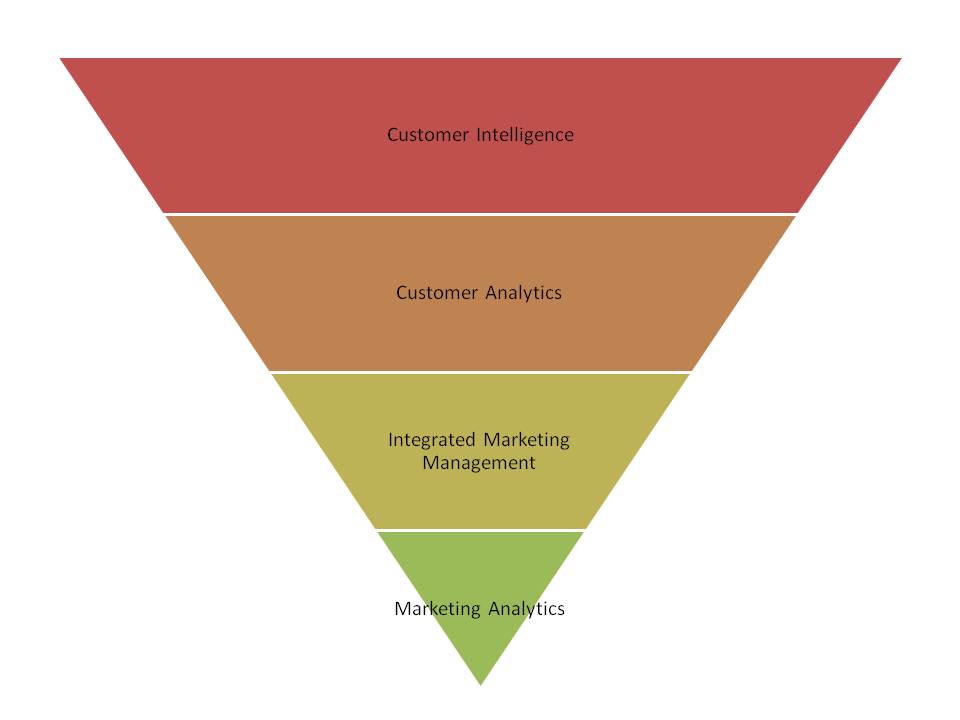In today’s fast paced marketing software industry, sorting through terms and naming conventions can be quite a confusing task. Often times – in an attempt to “differentiate” themselves from other vendors – software companies and solution providers invent new names and terms, which can easily result in confusion. Naming a product or even a set of features can have big implications, especially considering how important search has become in the context of today's marketing. With that in mind, I'd like to zero in on four common terms in use today and see if I can establish some clarity among them.
Some of these terms have been coined by SAS, others come from elsewhere, and all of them are used in some capacity in my everyday work. So it's worth taking a moment to provide clarity around the intended meaning for each of these seemingly similar terms: Customer Intelligence, Customer Analytics, Integrated Marketing Management, and Marketing Analytics.
Customer Intelligence – this term refers to the broadest category of customer software solutions that can be applied to not only marketing, but to other business functions as well, such as support, service operations, sales, etc. Every department inside every organization desires information or intelligence about their end customer. The term customer intelligence thus brushes a broad stroke across all software that delivers information on an organization’s customer.
Customer Analytics - this refers to the processes, methodlogies, and technologies that give organizations the customer insight necessary to drive marketing solutions. As the backbone for organization to customer (B2B or B2C) marketing activities, customer analytics comprises techniques such as predictive modeling, data visualization, information management and segmentation.
Integrated Marketing Management - refers to the Customer Intelligence emphasis placed on the marketing function – and managing the marketing process end to end – from marketing strategy and planning all the way to measuring the customer experience. Once that customer experience is measured, results are returned to the marketing department – thus completing the “closed loop marketing process.” The IMM process is initiated and driven by the marketing department.
Marketing Analytics – this term comprises the processes and technologies that enable marketers to evaluate the success of their marketing initiatives by measuring their performance (e.g., blogging versus social media versus channel communications), and by using important business metrics, such as ROI, marketing attribution and overall marketing effectiveness - all of which relate to marketing analytics.
Thus the relationship between these four terms would look like this – with customer intelligence being the broadest most overarching term: 
Having now defined these terms, I'll take a stab at exploring what comprises each term, then consider the SAS solutions associated with each term, and finally, I'll provide the reasons that these terms (or processes) are important to think of as different and distinct.
Stay tuned as we will look more closely at each term in more detail and hopefully have these terms be useful landmarks to help you navigate the data-driven marketing landscape!

5 Comments
Thanks Jonathan! This really helped clear up some definitions.
You are welcome! Please stay tuned as we dive into deeper detail around each term in 2013!
Pingback: What's in a name – landmarks on the software landscape. Term 1 - Customer Intelligence.
Pingback: What’s in a name – Customer Analytics. - Customer Analytics
Pingback: closed loop marketing - SAS Customer intelligence - Integrated Marketing Management